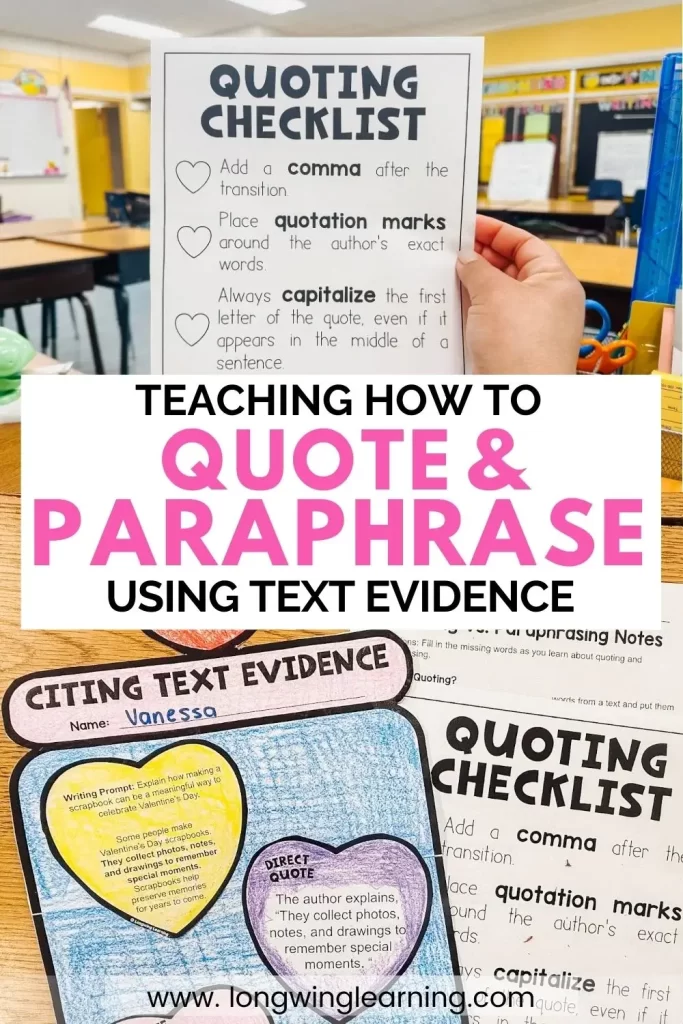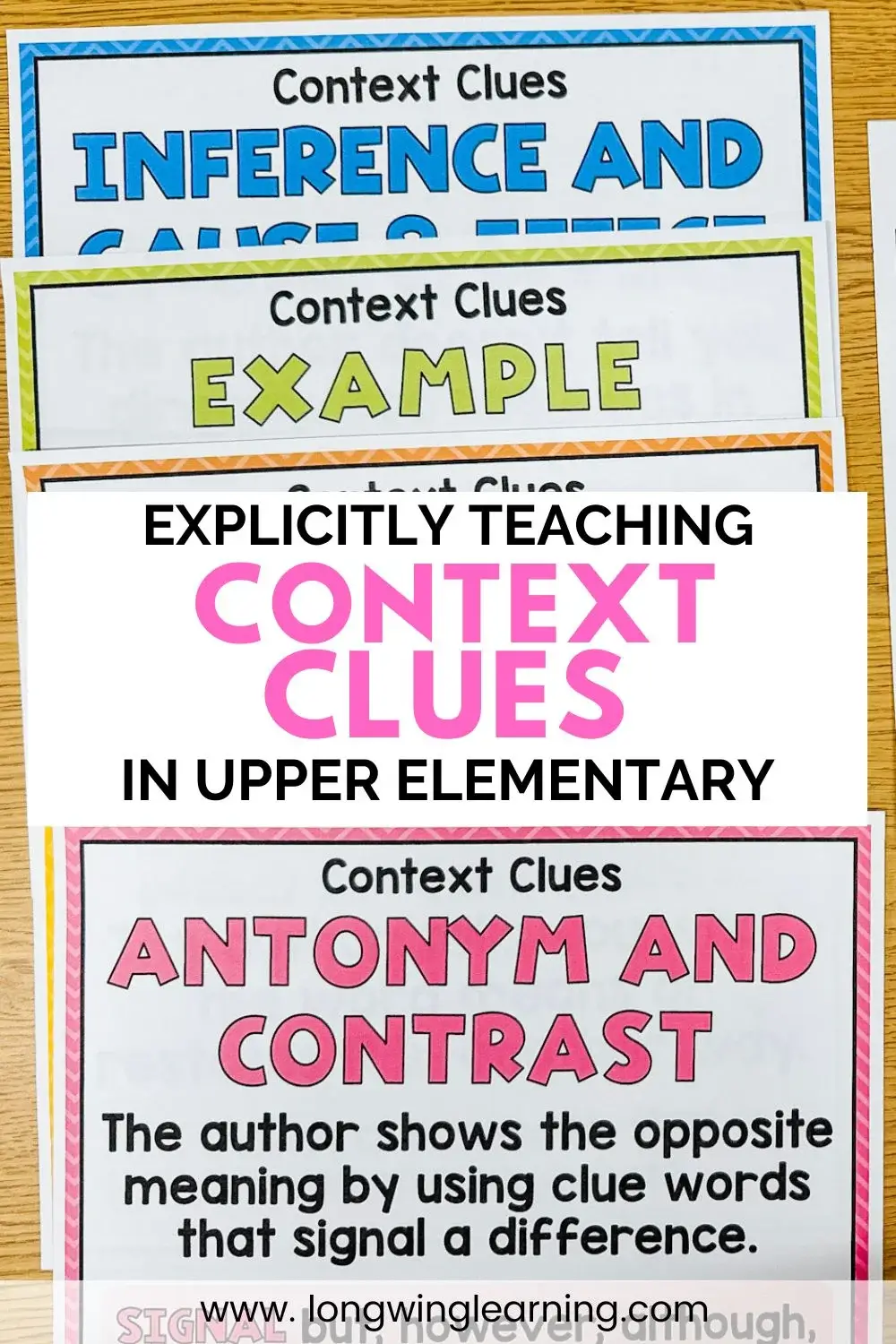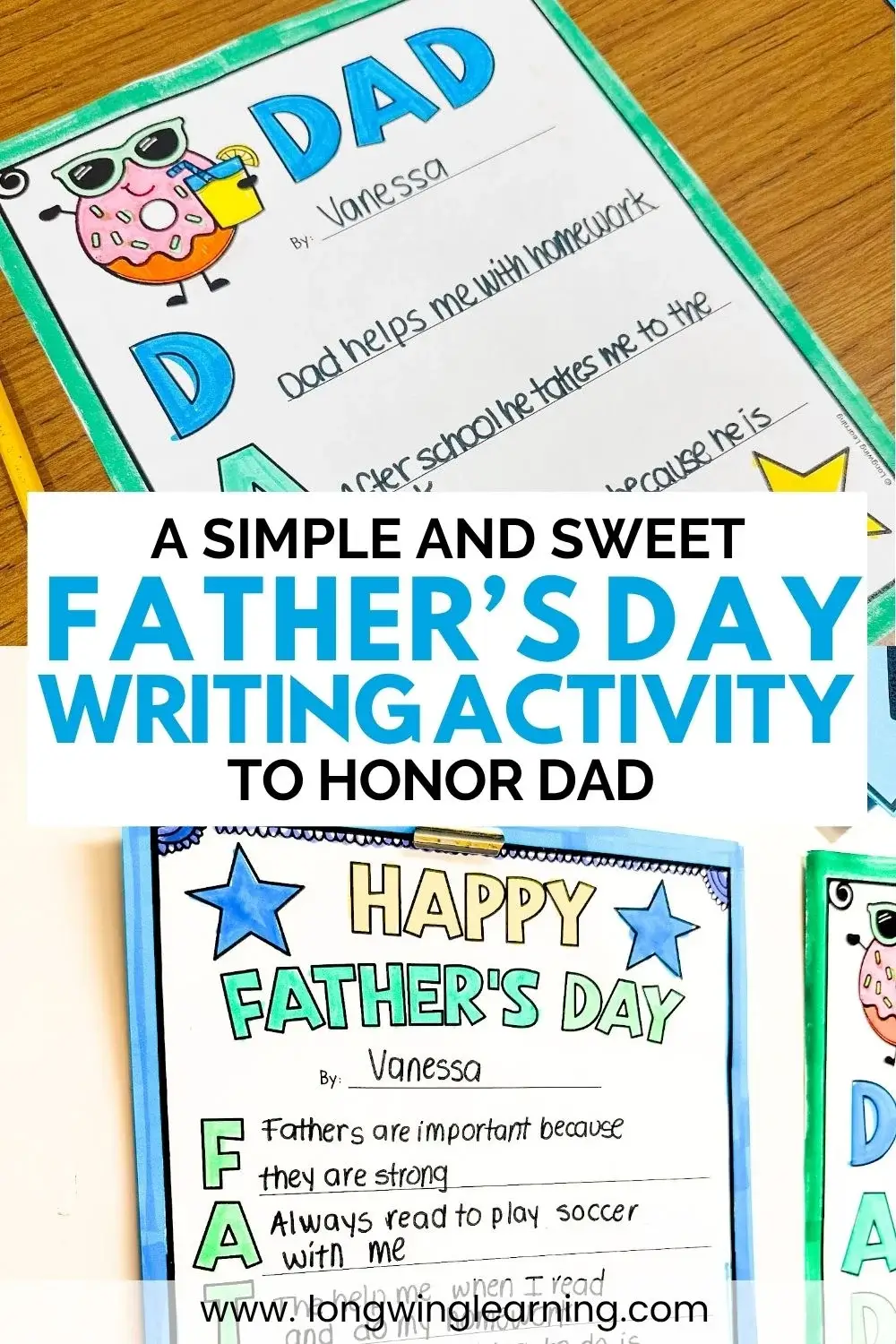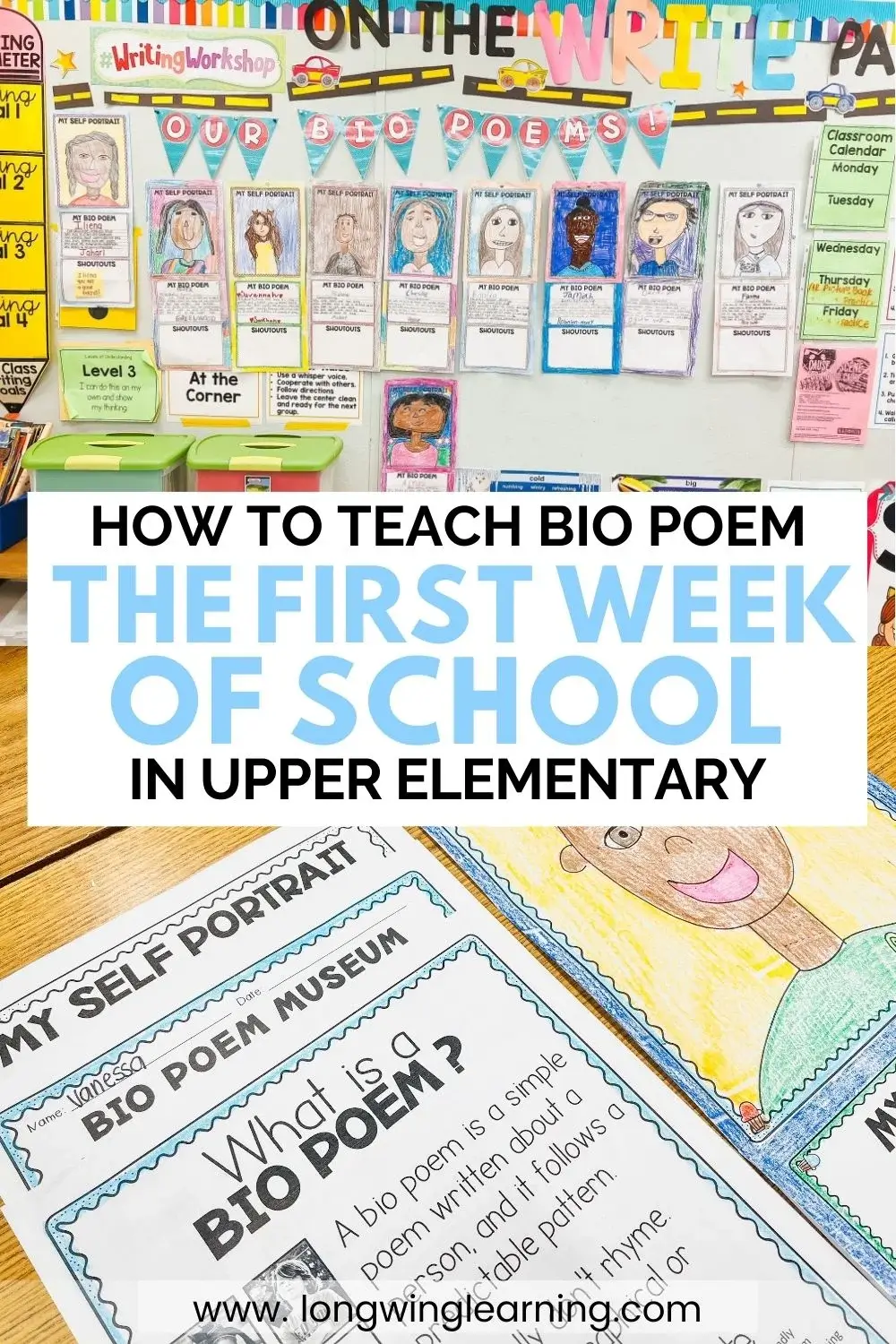Are you teaching students how to quote and paraphrase effectively? In this post, I’m sharing simple strategies to help students practice citing text evidence correctly—plus a fun hands-on activity to reinforce these skills!
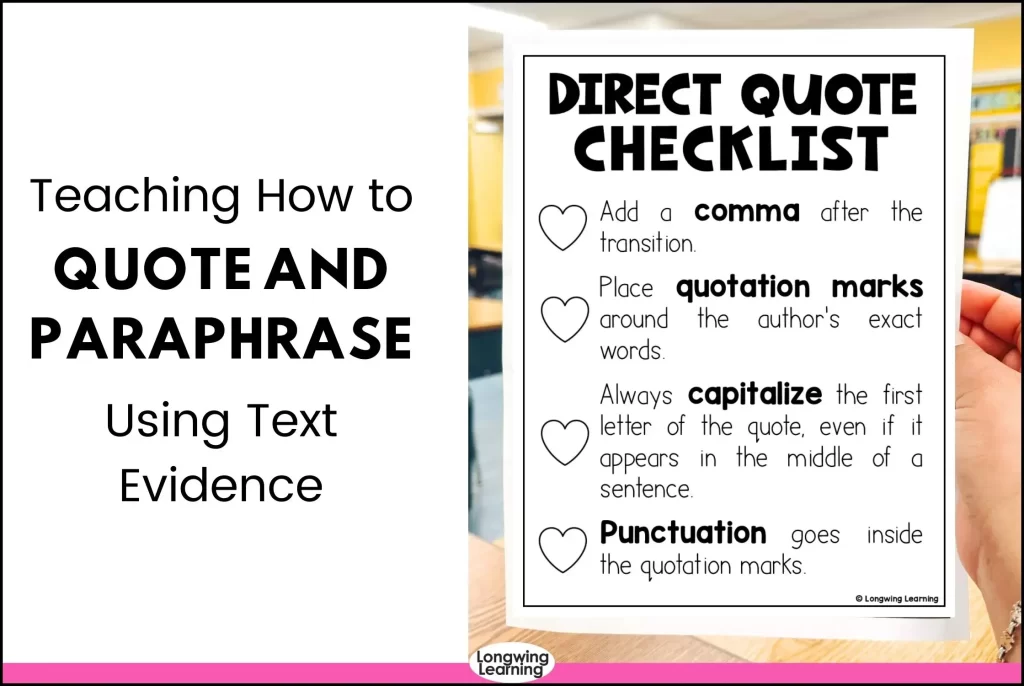
As upper elementary teachers, we know how tricky it can be to get students to cite text evidence properly.
When I first introduced quoting and paraphrasing in my classroom, I saw two extremes—some students would copy entire sentences word-for-word, while others would barely reference the text at all.
I’d get responses like: “The book said…” followed by a whole paragraph, or “The main character was sad because, well… he just was.”
That’s when I realized my students needed more than just an explanation; they needed a structured way to practice quoting and paraphrasing step by step.
Over time, I found that breaking these skills into bite-sized lessons made all the difference.
Instead of overwhelming students with lengthy writing tasks, I started focusing on targeted activities that helped them master direct quotes and paraphrasing separately before putting it all together.
And let me tell you—it worked!
If you’ve ever struggled to teach these concepts, you’re not alone.
In this post, I’ll share why these skills matter and how you can help your students get comfortable using text evidence in a way that makes sense to them.
Why Teaching Students How to Quote and Paraphrase Matters
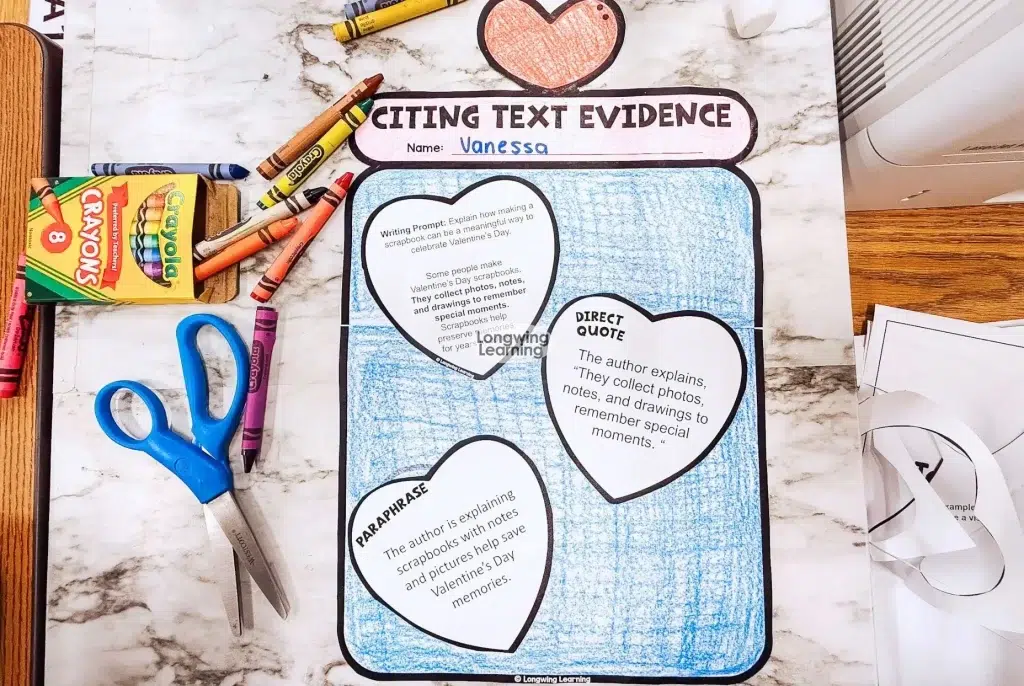
One of the trickiest writing skills for upper elementary students is knowing when and how to quote and paraphrase effectively.
Without guidance, many kids either copy entire sentences from a passage or struggle to put ideas into their own words.
I’ve seen this happen time and time again. When my students first started working with text evidence, they’d either lift entire chunks from the text or summarize in a way that barely connected to the original meaning.
And punctuation? That was another battle.
Quotation marks were either missing altogether or popped up in the wrong places.
That’s why I make quoting and paraphrasing a focused skill in my classroom—not something I squeeze in when we’re writing essays, but a skill we intentionally practice.
What Students Need to Know About Quoting and Paraphrasing
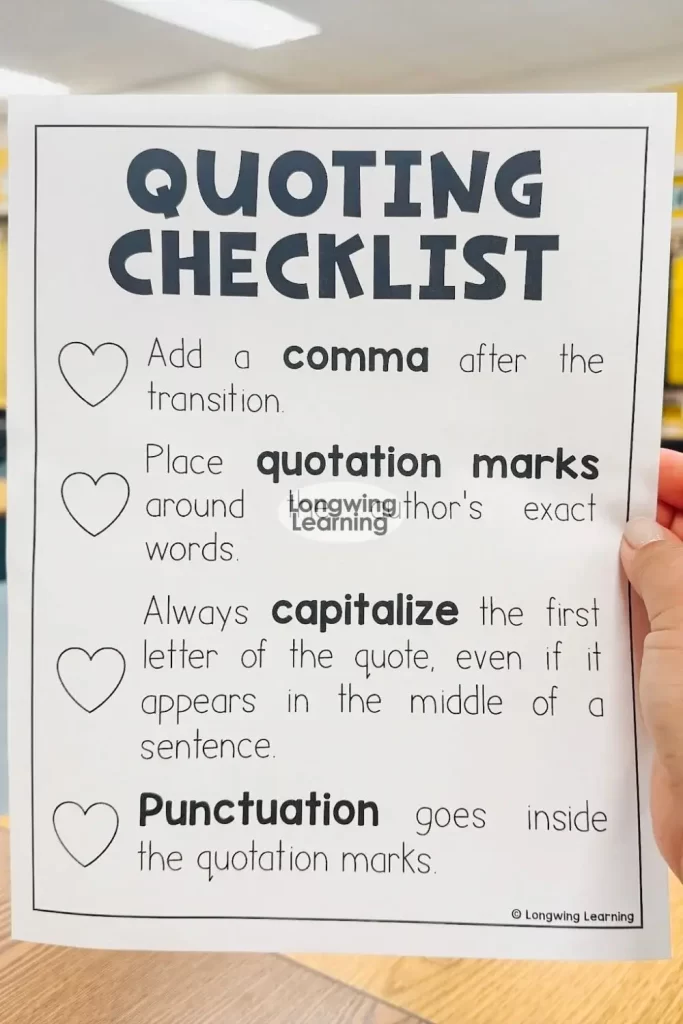
Before students can confidently use text evidence, they need clear expectations and structured practice. Here are a few key things I emphasize:
Quoting means using the exact words from a text and placing them inside quotation marks. Students must introduce the quote and punctuate it correctly.
Paraphrasing is putting information from a text into their own words while keeping the original meaning intact. This requires more than just swapping out words—it’s about restructuring the idea.
Both skills require citing the source, whether in a short response or an essay.
I don’t just tell my students to “quote the text” or “paraphrase in your own words” and expect them to get it.
Instead, I give them a structured way to practice these skills before applying them in longer writing assignments.
A Simple Way on How to Teach Quoting and Paraphrasing
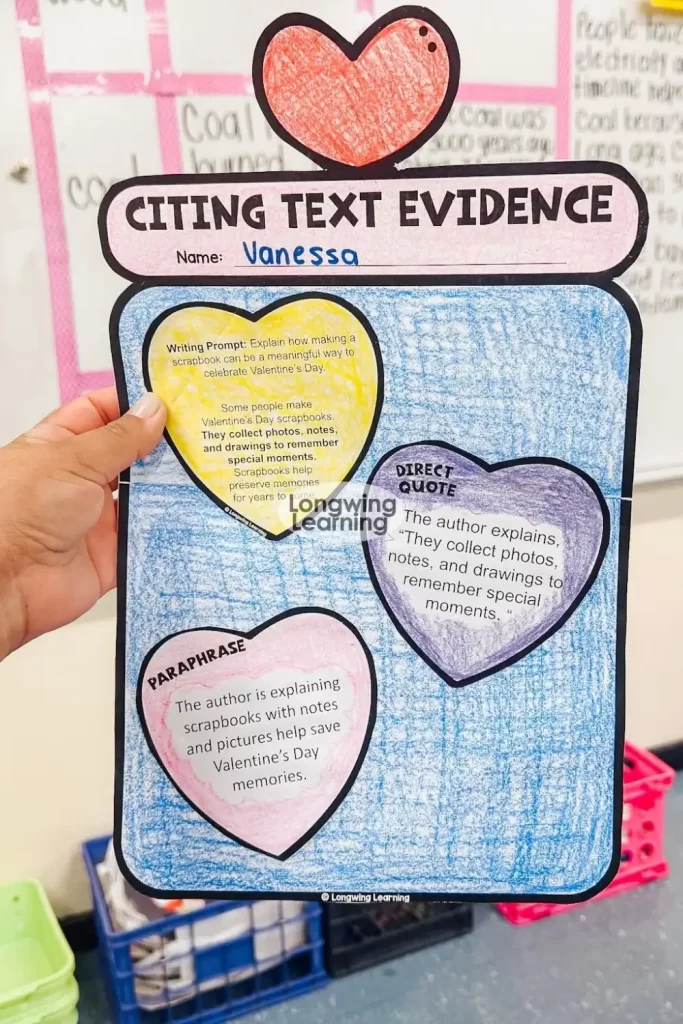
One way I’ve made quoting and paraphrasing easier for students is by breaking it into small, manageable steps using a hands-on approach.
That’s why I created my Quote & Paraphrase Writing heart activity, which helps students practice these skills in an interactive way.
Here’s how it works:
Students start with a short passage where the important sentence is already bolded for them. This eliminates the guesswork and lets them focus solely on quoting and paraphrasing instead of spending time figuring out what to pull from the text.
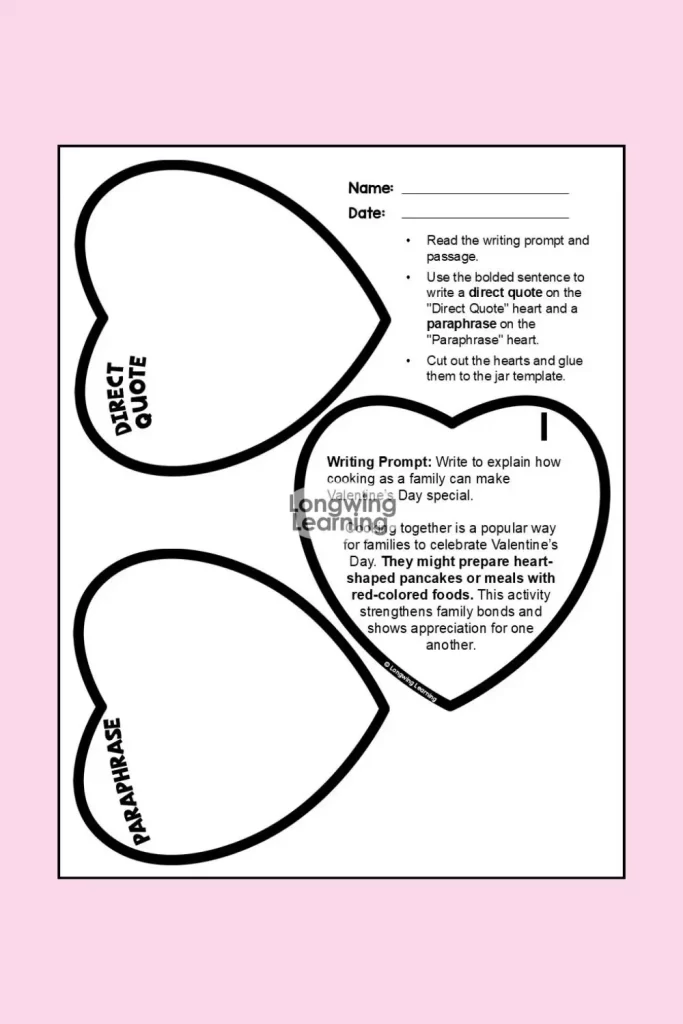
They write the quote first, focusing on correct punctuation. This step is all about accuracy—students practice placing quotation marks, using commas correctly, and making sure they copy the sentence exactly as written.
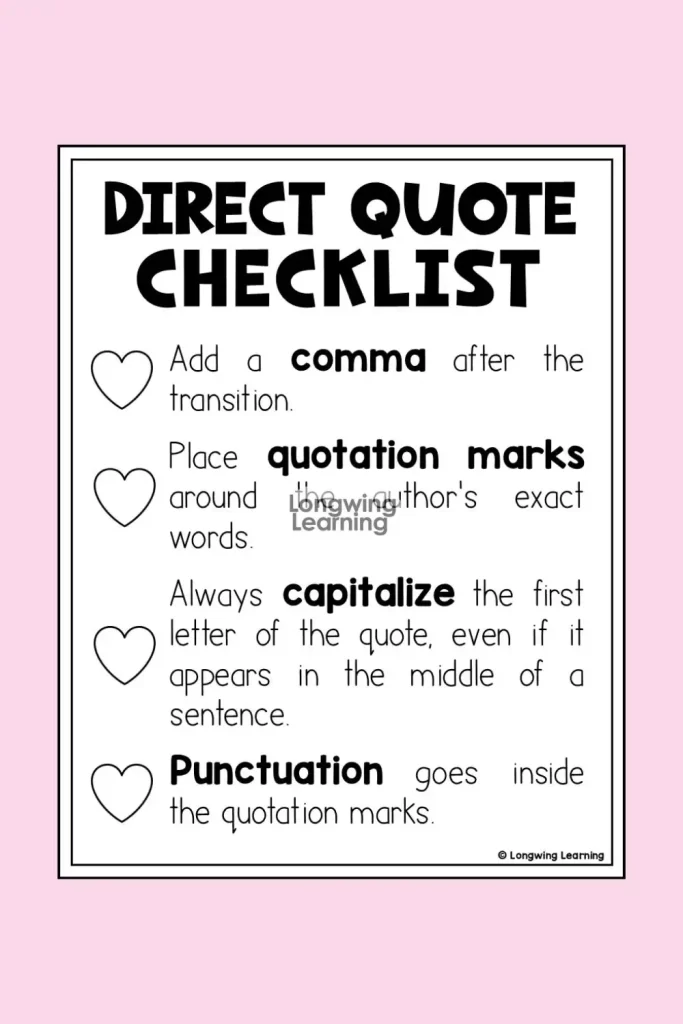
Then, they paraphrase the sentence in their own words. This is where they apply their understanding, changing the structure of the sentence while keeping the original meaning.
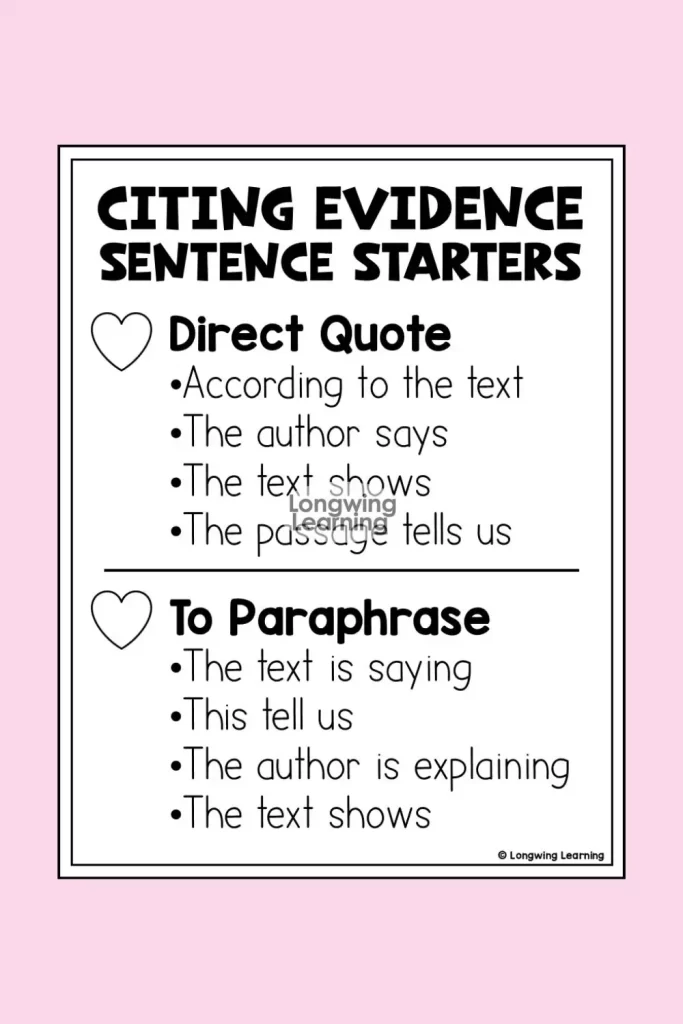
Finally, they complete the craft, turning their work into a display. This reinforces the lesson in a fun, creative way.

The best part?
Because the focus is strictly on quoting and paraphrasing, students get the repetition they need to build confidence with these skills.
Why Teaching Students How to Quote and Paraphrase Works So Well
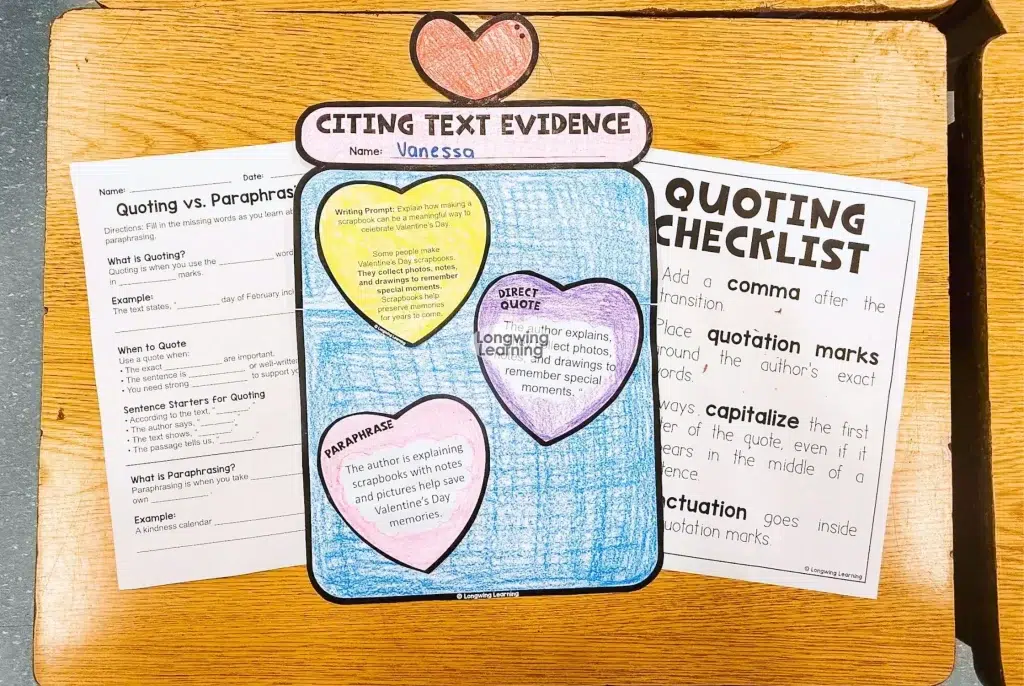
When I first started teaching quoting and paraphrasing, I used to introduce the skill during essays or extended responses.
But I quickly realized that students were overwhelmed—they were juggling too many skills at once.
By isolating quoting and paraphrasing in a dedicated practice activity, my students gained confidence before they had to apply it to a full-length writing piece.
Here’s why this approach is so effective:
- It removes the overwhelm. Students aren’t worrying about choosing the right evidence or structuring a whole paragraph; they focus on quoting and paraphrasing.
- It provides a clear structure. The format gives students a step-by-step process, reinforcing good habits for punctuation and wording.
- It builds confidence. When students get multiple opportunities to practice a skill in isolation, they’re far more likely to remember it when they need it later.
Make Quoting and Paraphrasing a Habit
Teaching students how to quote and paraphrase correctly doesn’t have to be complicated—it just needs to be intentional.
If you’re looking for a way to help students master this skill, check out my Quote & Paraphrase Writing activity.
It’s a simple, hands-on activity that gives students the focused practice they need to feel confident with text evidence.
Click here to grab the resource and start reinforcing these skills in your classroom!
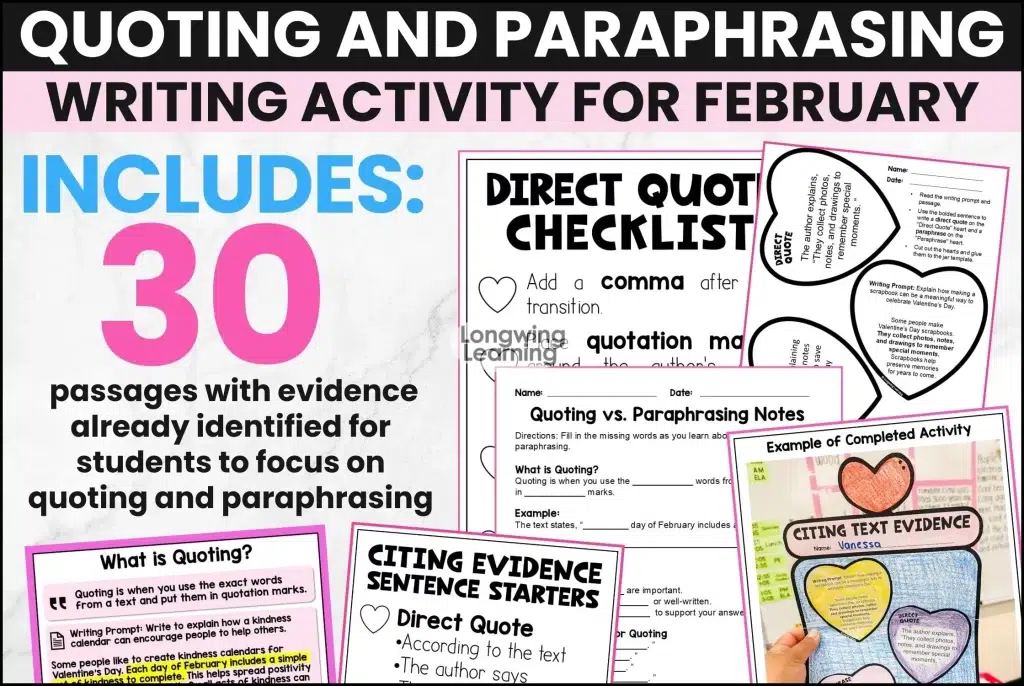
Love this idea? Save this post to your Pinterest board so you can come back to it when planning your writing lessons!
